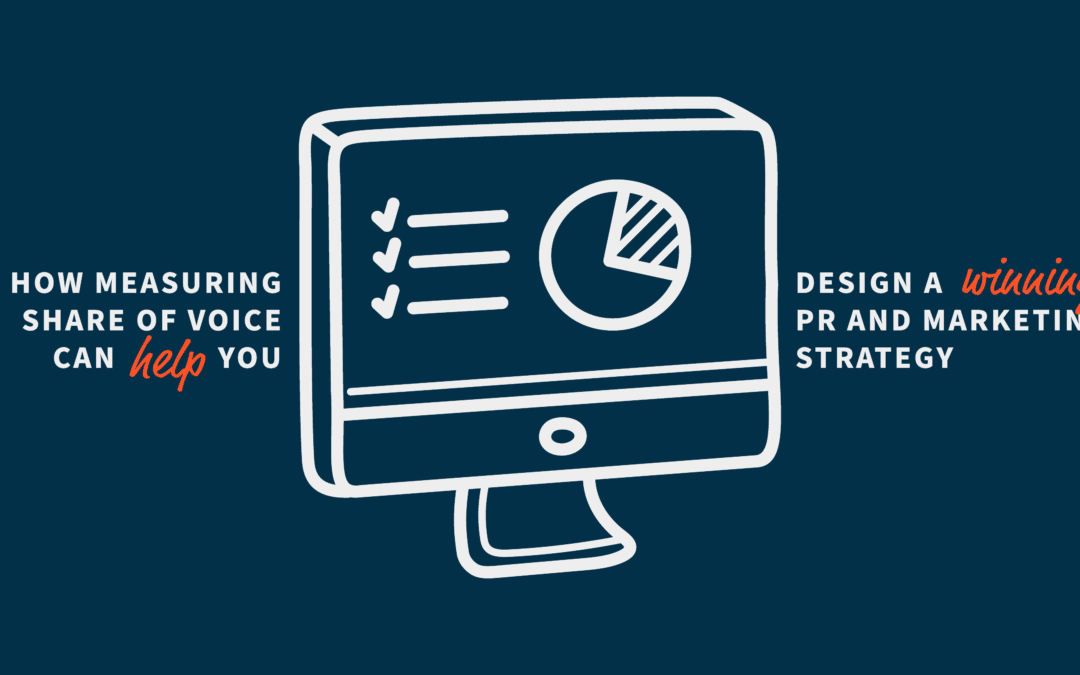Share of voice (SOV) measures the total amount of brand-generated coverage (could be advertising, marketing, or earned media mentions) versus the total amount of competitor-generated coverage. This measurement can be used to determine the effectiveness of your PR and marketing strategies.
As a business owner, PR practitioner, or marketing professional, it’s important that you understand your brand’s SOV and what it’s telling you. Do you have a strong share of voice in your industry? How do your campaigns compare to those of your competitors? And which strategies can you use to improve your share of voice?
Why measuring share of voice matters
Share of voice is a starting point for discovery. After seeing that you have 60 percent of the total coverage vs. your competitor, or product A has 23 percent of coverage while product B has 77 percent, you should be asking the question: why? It’s only by unpacking the why that you’ll be able to better inform your PR and marketing strategies.
Here are a couple examples of what SOV analysis can lead to:
Competitor insights
Analysis of SOV can offer competition guidance. If you see that your competitor has a higher SOV than you do, ask the following questions:
- Have they launched a new campaign?
- Has their spokesperson been getting a lot of coverage?
- Is the coverage around them negative or positive?
- What angle are they taking that seems to be getting traction with the media?
- Is the coverage in outlets of relevance to your shared audience?
Depending on the results of your investigation, you may want to consider shifting your earned media strategy, investing in some paid advertising, ramping up your social media presence, or even improving your website.
Audience insights
There’s a reason you target certain journalists for earned media: they have the eyes and ears of your target audience. Dissecting SOV—whether you’re looking at you vs. a competitor, product vs. product, or some other comparison—can help you identify what your audience is interested in.
Combining SOV with sentiment will also let you know if the coverage is positive, negative, or neutral. Because if you have high SOV but your sentiment is mostly negative, then you need to make sure you’re addressing what could be causing the negative sentiment before it erodes audience trust.
How to measure share of voice
There are two main ways to measure share of voice: use a brand tracking tool (like media monitoring and/or social listening) or conduct a sample survey. Let’s look at each of these methods in more detail.
Using brand tracking tools

Agility media monitoring sentiment analysis
Brand tracking tools like social listening and media monitoring are a great way to see how your brand is performing in the market.
They will give you industry-wide data for your brand, as well as your competitors’ brands. These tools will help you get a high-level overview of where your campaigns are performing well and where they’re not.
You can also look at what types of content generate the most activity, and if these lead to increased brand mentions on a specific platform. This data, enhanced by AI technologies, will offer guidance in assisting you to determine which channels you should focus efforts on.
Share of voice measurement tools make calculations based on:
- The percentage of all unaided brand mentions within a specified market.
- The percentage of all unaided brand mentions within a specified market that are your brand.
Conducting sample surveys
Sample surveys can provide more in-depth data than brand tracking tools. They’re also more costly, timely, and limited in terms of who they reach. They are often conducted within your own customer base and will specifically show you how your customers receive advertisements and perceive your brand.
If 10 out of 10 customers interviewed mentioned your products and 8 out of 10 mentioned your competitors’ belonging to your target market, then you have 80% share of voice with this group in this time frame.
These ratios are calculated to find which campaign or advertising tactic has performed the best. For example, if two different ads were sent out when there was heavy competition from other companies and product releases, one might resonate with more people than another due to content relevancy or personality projection by a spokesperson such as famous sports player for your product niche.
Next steps
We’re sure you’re beginning to see how analyzing SOV would be helpful to adjust marketing materials and PR activities for maximum effectiveness. If you’re interested in learning more about the brand tracking tools we mentioned, we’d love to give you a free demo!







